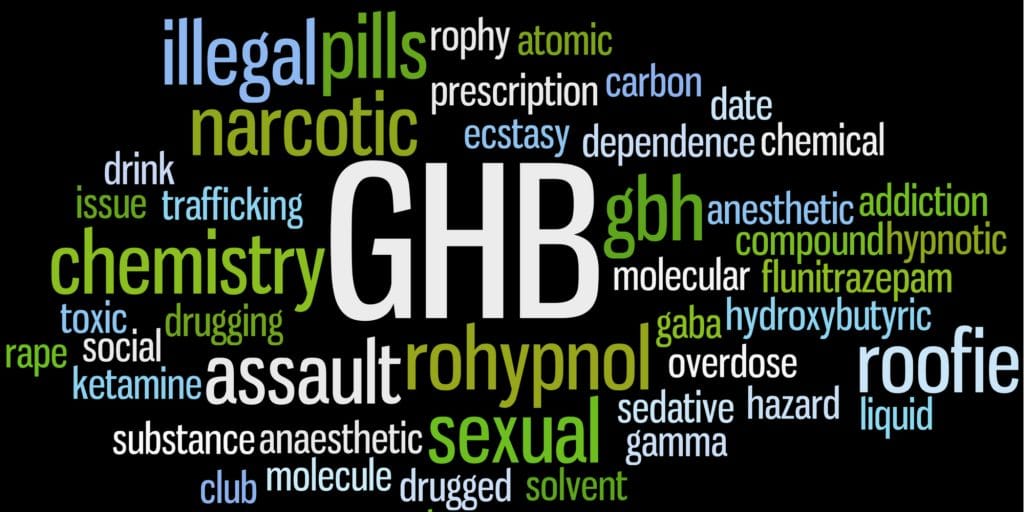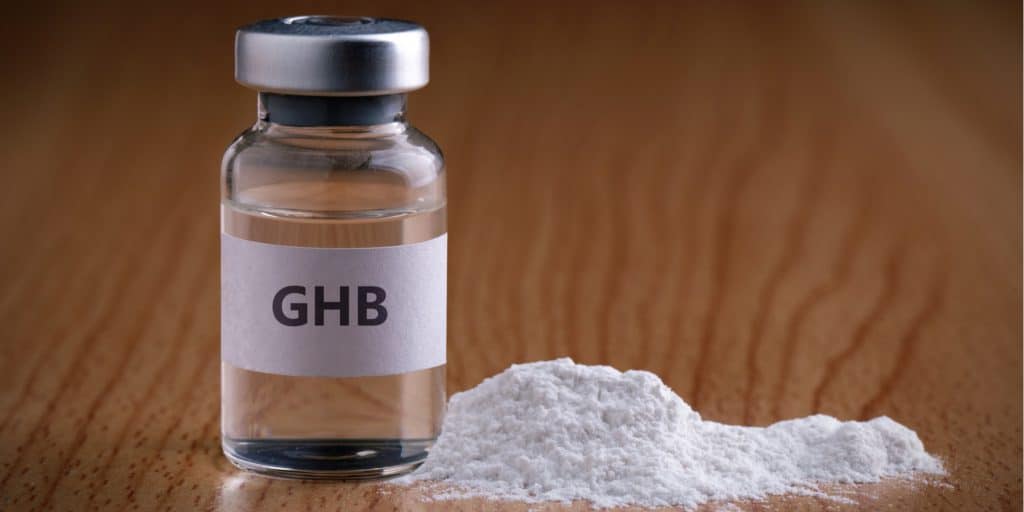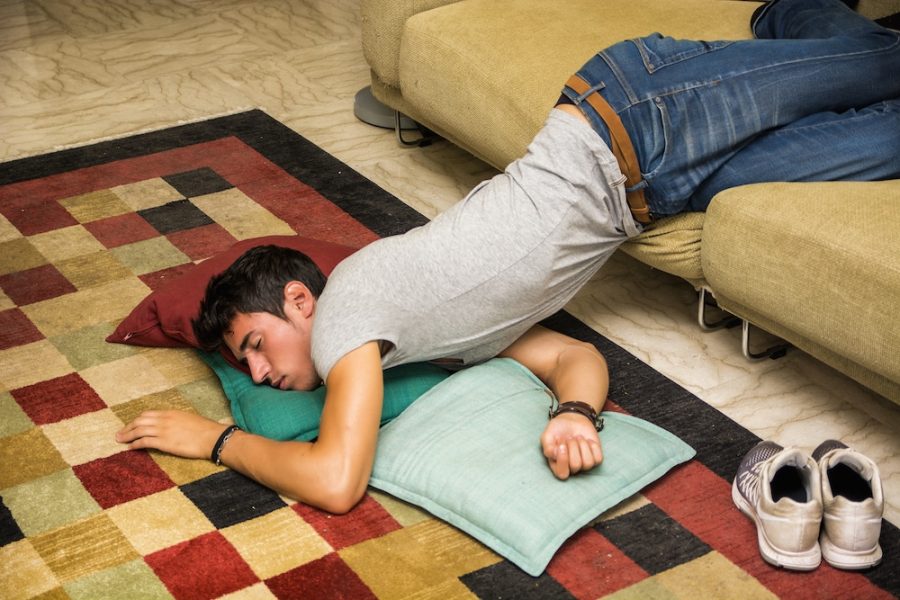
20 years ago, liquid G (GHB) was one of the popular drugs in Las Vegas clubs. However, after being classified as a controlled substance in 2000, it nearly disappeared from the drug scene.
Unfortunately, drug-related arrests and high profile criminal cases indicate that liquid G is once again in circulation.
In this article, we answer the most frequently asked questions about liquid G, from how it’s made to how much GHB is safe.

Table of Contents
GHB Drug History
GHB was originally developed in the 1960s as a general anesthetic but was discontinued due to the undesirable side effects it had on patients, including seizures.
Fast forward to the 1990s when GHB was marketed as a legal, over-the-counter sleep aid. However, after reports of overdoses began to surface, the substance was banned from legitimate sales.
Nonetheless, recreational use of liquid G continued as it became recognized as a cheaper, more powerful alternative to alcohol. In addition, liquid G was popular among bodybuilders for its anabolic properties and assumed ability to increase muscle.
As news of overdoses became more widespread and the “G drug” became illegal to possess, incidences of GHB drug use declined sharply and stayed that way for several decades. Today, G is again gaining worldwide attention as a club drug and a “chemsex” aid, especially among young men who have sex with men and electronic festival crowds.
Below, learn answers to questions about GHB, its counterparts, and the inherent safety risks associated with consuming liquid G.
Most Frequently Asked Asked About Liquid G
What is GHB?
GHB, which stands for gamma-hydroxybutyrate, is a chemical that acts as a central nervous system depressant. It occurs naturally in the body in small amounts and is legal for the treatment of narcolepsy under the prescription Xyrem.
Liquid G is also used recreationally. When taken in tiny dosages, GHB drug effects include euphoria, increased sex drive and sociability, and drowsiness. However, the line between a “high” and an overdose is very thin with liquid G.
In slightly higher doses, GHB overdose is common. Symptoms of liquid G overdose include confusion, vomiting, loss of muscle control, comatose unconsciousness, and respiratory arrest.
What does GHB look like?
GHB, or Liquid G, looks a lot like water. It is colorless, odorless, and tasteless aside from a salty, chemical-like flavor.
What is G drug slang?
G, liquid ecstasy, and scoops are just a few of the names that are synonymous with liquid G. Other GHB street names include:
- Grievous bodily harm (GBH)
- Liquid E
- Liquid X
- Georgia homeboy
- Goop
Additionally, prior to entering a “G-hole,” or a state of liquid G-induced unconsciousness, users are said to make a “caveman face,” or a distorted facial expression indicating GHB overdose.
What does GHB do?
Liquid G acts as a central nervous system depressant. That means that it slows activity in the brain and decreases a person’s heart rate.
The drug is a sedative that is known to cause euphoria in small doses, but also memory loss, unconsciousness, and respiratory malfunction.


What does GHB feel like?
Liquid G is often described as a stronger version of alcohol that doesn’t produce horrible hangovers. G also affects brain chemistry, resulting in a euphoric feeling stronger than that of alcohol.
The danger of liquid is the razor-thin margin of error in GHB dosage. A few drops too many are the difference between intoxication and becoming completely incoherent.
How long does GHB take to kick in?
It takes about 15-20 minutes to feel the effects of GHB.
How long does GHB last?
Once digested, the effects of liquid G last anywhere from about an hour to four hours depending on the personal characteristics of the user (dosage, tolerance, etc.).
How addictive is GHB?
Liquid G is highly addictive. Regular use results in a higher tolerance to G, and both physical dependence and psychological addiction can develop.
In addition, GHB will produce withdrawal symptoms among regular users who suddenly try to quit. GHB withdrawal can be dangerous and persistent, lasting from weeks to months, which often increases the occurrence of relapse among those wishing to quit.
GHB withdrawal symptoms include:
- Delirium
- Insomnia
- Rapid heart rate
- Tremors
- Hallucinations
- Profuse sweating
- Paranoia
- Anxiety
- High blood pressure
- Psychosis
How is GHB made?
Drug dealers commonly learn how to make GHB in sinks or bathtubs from recipes found online. They generally use chemicals called GBL (gamma-butyrolactone) or BDO (1,4 butanediol) which are GHB precursors that are easily accessed from floor cleaners and paint strippers. They are similar chemical structures to liquid G and convert to GHB after being ingested.
Unfortunately, these precursors are stronger than GHB, making the dosage even harder to calculate.
How long does GHB stay in your system?
Liquid G does not stay in your system very long, making it difficult to detect if someone was unknowingly drugged. In general, the GHB half-life is about 45 minutes. This means that half of the GHB taken will be discharged from your system within 45 minutes. Liquid G remains detectable in blood for a little longer (about two to four hours) and in urine for the longest (up to 12 hours).
It is worth noting that numerous personal factors will affect the length of time GHB stays in your system, including gender, weight, and whether any other substances were taken.
How do you take GHB safely?


GHB batches vary greatly and effects cannot be known until ingested. Therefore, illegally produced liquid G can never be assumed safe.
If you suspect someone has taken GHB and is beginning to overdose, call for help immediately. If they lose consciousness, place them in the recovery position by rolling them on their side. This will minimize the risk of accidentally choking if vomiting occurs. Never leave someone to “sleep it off” as they could be experiencing respiratory arrest.
Getting Help for GHB Addiction in Las Vegas, Nevada
At the Vance Johnson Recovery Center in Las Vegas, Nevada, we are here to meet you wherever you are in your journey.
Our accredited drug rehabilitation center offers the best inpatient and residential rehab programs for addiction to liquid G, alcohol, opioids, prescription medications, meth, cocaine, and many other substances. VJRC will soon offer drug and alcohol detox as well.
Now is the time to break the cycle of substance abuse. To reach one of our admissions specialists, contact us at 888-828-2623 or fill out our online contact form.
Wherever you are in your recovery journey, we are here for you every step of the way.
The post Most Frequently Questions Asked About Liquid G (GHB) in 2021 appeared first on Vance Johnson Recovery Center.
Source
Original Author: Vance Johnson Recovery Center

